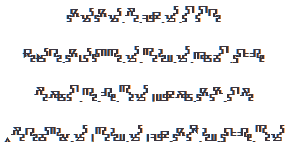Kituba love poem
Na talatala
Kizizi ya nge na talatala
Kele nzimbu ya munu ya kulutila kitoko
Kasi sala mbangu, yau ke ku zimbana
Yau kele mu zola nge, ya munu, ya mansukina

With the mandombe script
Na talatala
Kizizi ya nge na talatala
Kele nzimbu ya munu ya kulutila kitoko
Kasi sala mbangu, yau ke ku zimbana
Yau kele mu zola nge, ya munu, ya mansukina

→ French poem ←
Kituba language a creole of Kikongo
My love poem in Kituba (Munukutuba, Kikongo ya leta, Kikwango, Munukituba, Koongo, Kikoongo, Kikongo-Kituba, Monokutuba) has all the heat and rhythm of your dances. Pretty poem, African woman, look at your image, your reflection in the water of Congo river, or in your mirror with this munukutuba poetry. Do it fast, because it evaporates, like the water of your river, heated by the sunshine!
Munukutuba is a Kikongo Creole spoken by 7 million people, in the two Congos (southwest of the DRC and south of the Republic of the Congo), as well as in Angola (to the north) and Gabon.
It is a language which prevailed over a good number of dialects mainly because of trade; it was lexified on the Kimanyanga.
This language was built in early 1900 during the construction of the railway between the Atlantic and Kinshasa, which required the displacement of many workers from different ethnolinguistic groups, for them to communicate with each other. It will also serve in Christian missions and in operating companies created by Europeans.
It is also the language adopted by the Belgian colonial administration as a vernacular linguage.
Currently Kituba in cities is spoken as a second or third language by a very large number of people. The language presents several variants, at least three dialects (north, south and east) without counting the variants which are found between towns and countryside, between the most educated and the simplest people.
For fun, I put here this Bantu language in the mandombe syllabary, invented by David Wabeladio in 1978, because it is rather pretty and will really change of the usual Latin letters.